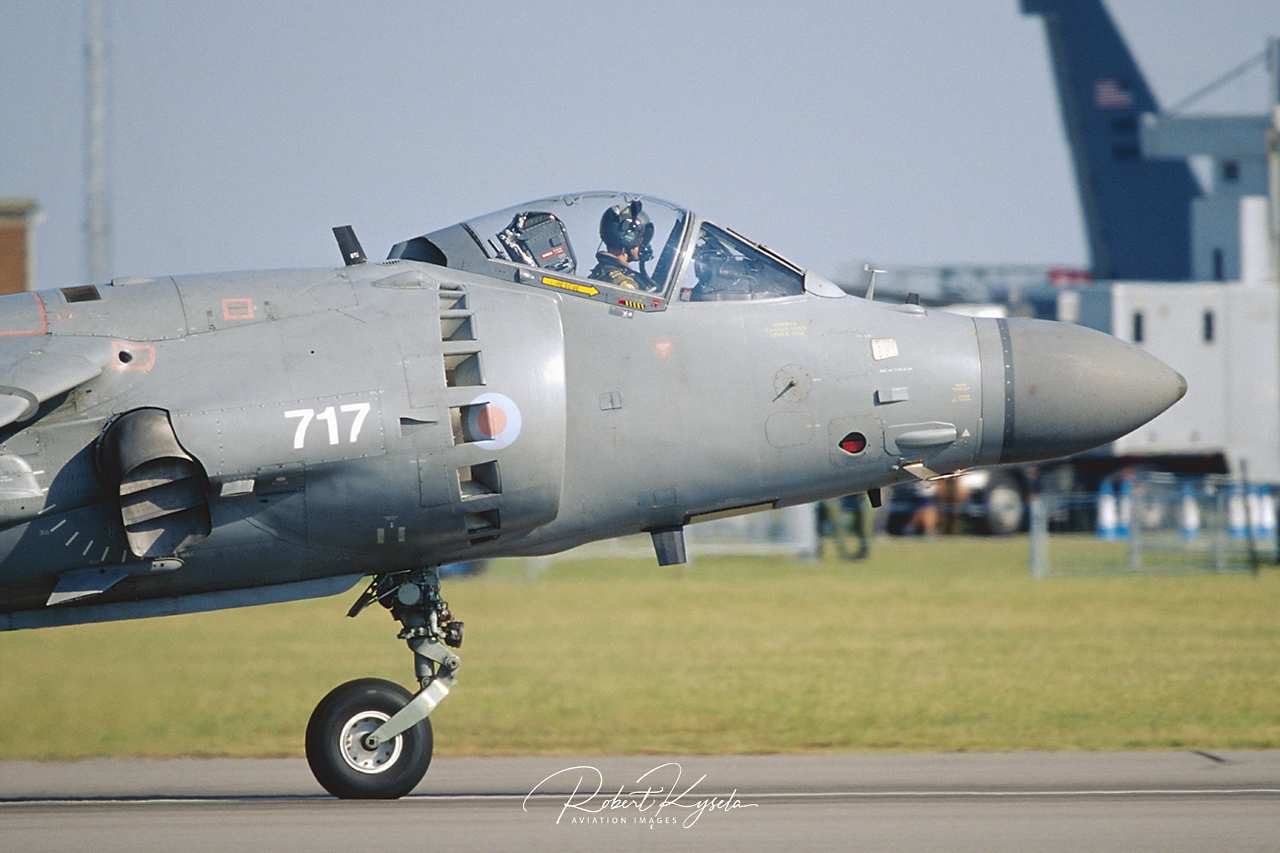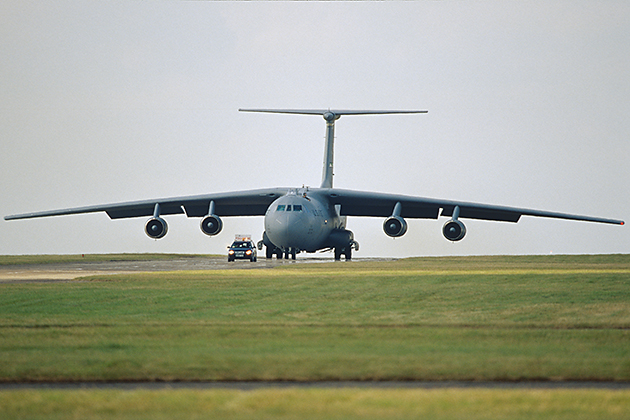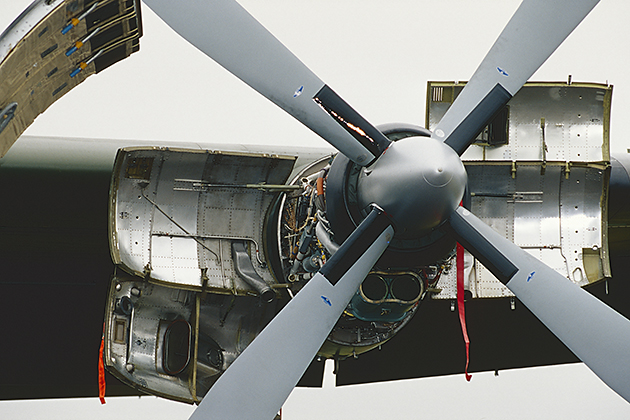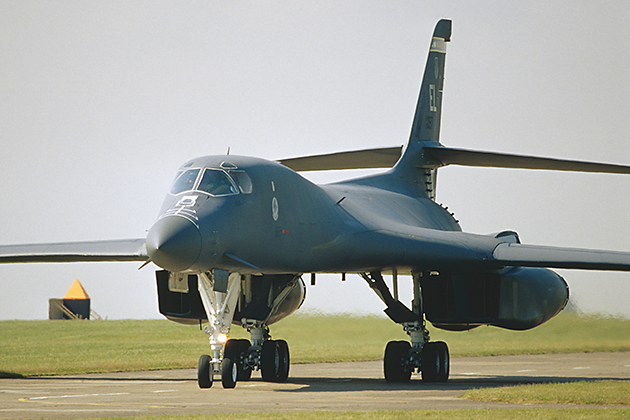RIAT 2000 - RAF Cottesmore / UK
Update: 2020/04/18 by Robert Kysela / CHK6










For the first time in 25 years the worlds biggest airshow did not take place on its original base at RAF Fairford due to construction working there, it was transferred to the former TTTE ( Tri-national Tornado Training Establishment ) Base RAF Cottesmore. This base is not as big as the one at Fairford, therefore there were some doubts in advance whether an event like the air tattoo could take place in Cottesmore. The decision for Cottesmore was actually not undisputed, at least not in UK. Anyway, thanks to the excellent organisation, the objections against the new location were dissipated, and due to the success of RIAT 2000, RIAT 2001 will also take place here. RIAT 2000 once again was a brilliant demonstration of British organisational talent. Enjoy the top pictures in this report, and look forward with us to RIAT 2001 – same place !
The MAGISTER was the first purpose built jet trainer, 929 were built in total.
R. Kysela


Even if several of the highlights did not show up, the variety of display was nothing to complain about. There were some exotic jets, such as the Austrian ”Tiger” Saab 105Oe, the Canadian Boeing CF-188 HORNET, or the Belgian Fouga MAGISTER. Unfortunately, the bad weather forced the pilots to cut or even cancel their displays, as with the Boeing F-15 EAGLE. The de facto NATO standard fighter, the Lockheed Martin F-16, was listed twice in the solo display schedule. A Dutch and a Belgian Viper demonstrated their enormous potential, and its incredible manoeuvrability still makes it a great attraction at every show. A Hungarian Mikoyan & Gurevich MiG-29 UB of the No. 59 Squadron in Kescemet won the Solo Jet Trophy for the best solo display last year. This year, the trophy was awarded to the Swedish JA-37 VIGGEN pilot. This and the display of the French AMD Mirage 2000 were both of top class. Not as powerful, but no less spectacular, was the performance of the Belgian Fouga MAGISTER from Beauvechain. The take off alone was worth watching. The MAGISTER was the first purpose built jet trainer, 929 were built in total. Its maiden flight was in 1952, and apart from France and Belgium, it was also used in Germany, Austria, Finland, Brazil, and Israel.


A feast for the eyes was definitely the beautifully painted Saab 105Oe of the Austrian Air Force. Flown by Sgt. Maj. Hubert Strimitzer, the performance of the small Saab jet was probably the biggest surprise of RIAT 2000. Originally, a PC-7 was scheduled to come from Austria, but much to the pleasure of many enthusiasts, the decision was revised at short notice. Sgt. Maj. Strimitzer had already flown the 105 in the legendary KARO AS aerobatic team, and with his 58 years, he is the most experienced pilot on this type of aircraft.
The Finnish pilot performed a very nice bad weather display including one touch and go after the other.
R. Kysela


The display of the SEPECAT JAGUAR Gr.Mk.3, from No. 16 Sqn. from Lossiemouth, was another highlight. This beautifully shaped jet was developed in cooperation by BAC and the French Breguet company. Apart from the RAF, the JAGUAR is on duty in India, Oman, Nigeria, and Ecuador, its maiden flight took place on Sept. 8th, 1968. Even if the announced Boeing F-18 E/F SUPER HORNET did not take part, the crowd were compensated with a Finnish Boeing F/A–18C HORNET, and four Canadian CF-18’s. The Finnish pilot performed a very nice bad weather display including one touch and go after the other. What British show would be complete without the legendary and unique HARRIER even more so at Cottesmore since it is home to two HARRIER Squadrons (No. 3 and No.4).


As already mentioned the Boeing F-15C EAGLE had to cancel its display due to adverse weather. Checksix However captured this powerful fighter in practice. Altogether three EAGLE´s were sent to Cottesmore from RAF Lakenheath. It’s a pity the crowd missed what is now a seldom performance from this mighty jet. The No. 56 Sqn from Conningsby sent a Panavia TORNADO F.Mk.3 (ADV). Unfortunately, due to lack of space, the takeoff and landing of this beautifully painted (upper fuselage and fin) jet did not take place in Cottesmore. The display itself was fantastic. Rather than cancel their show the TORNADO crew proved its all weather capabilities and provided a very dramatic show. The German Luftwaffe as well as the German Navy participated with several aircraft, in total there were seven (!) TORNADOS at Cottesmore. A Navy TORNADO performed a solo display, while two aircraft from Noervenich (JBG 31) and two from Buechel (JBG 33) showed the ”Missing man formation”, a tribute to the Luftwaffe members killed in action during WW II. Only in the static there were two TORNADO´s from the No. 51 reconnaissance squadron / Jagel AB with a special painting.


Again, the display of the British BAe NIMROD Mr.2 was in a class of its own. Derived from the De Havilland COMET, the first commercial jet airliner in the world. This heavyweight fighter (there is no aircraft in the world that deserves the name ”NIMROD” as this creation of British engineering skills) has an enormous potential. In spite of its size, this sea reconnaissance / anti-submarine warfare jet has an amazing manoeuvrability. In total, 5 squadrons are equipped with his aircraft that is said to be the most effective anti-submarine warfare aircraft in the world.
Two classic aircraft represented the status of the 40ies and 50ies of the last century, a Douglas DC-4 of the South African Historical Flight, and a Douglas C-47 Dakota of the BATTLE of BRITAIN MEMORIAL FLIGHT.
R. Kysela


A main motto of this year’s Air Tattoo was AIRLIFT 2000. The intention was to demonstrate the technical state of the art of modern transporters. Apart from the well known Lockheed C-130 HERCULES, Lockheed C-141 STARLIFTER, and its Russian pendant Iljuschin Il-76 (NATO-Code: CANDID), there were some interesting new cargo planes at Cottesmore, such as the Boeing C-17A GLOBEMASTER III, and the Ukrainian Antonov An-72 (NATO-Code: COALER). Many enthusiasts used the chance to have a look at the interior of these giants. Two classic aircraft represented the status of the 40ies and 50ies of the last century, a Douglas DC-4 of the South African Historical Flight, and a Douglas C-47 Dakota of the BATTLE of BRITAIN MEMORIAL FLIGHT. There were not only the really big ones, but some ”medium” transport aircraft, such as the Italian Alenia G-222, the French-German C-160 TRANSALL, and some Antonovs, rounded up the AIRLIFT 2000.


The biggest number of aircraft from one type was counted for the most successful transport aircraft of the past decades: the die Lockheed C-130 HERCULES. There were 19 (!) HERCULES at Cottesmore, also the newest version, the C-130J, and a special Hercie adapted for meteorological measurements by DERA, called W-2. Because of the arrangement of its engines, the Ukrainian Antonov An-72 makes a somehow strange impression. The designers used the so-called COANDA – effect, i.e., the engine exhausts stream over the upper side of the wings, and therefore generate additional lift. So far, only one aircraft with a comparable configuration was built: the McDonnell Douglas YC-15, but this was a four engine jet and never went into production.
The C-17 carries four times the amount of freight a HERCULES carries, while it can take off and land at the same runways (less than 1000 m) with full load.
R. Kysela


The big brother of the HERCULES, the Lockheed C-141 STARLIFTER has been the backbone of the strategic transport fleet of the US Air Force for many years. It was the first wide-bodied jet equipped with turbofan engines with a high bypass ratio. In total, 384 STARLIFTER´s have been built, the example on the photo below belongs to the 155th Air National Guard from Tennessee. The most modern transport aircraft of the USAF is undoubtedly the Boeing C-17A GLOBEMASTER III. Originally developed by McDonnell Douglas, it is the most advanced widebody transport aircraft in the world. This jet enables the Air Force to fulfil its claim to be a global player. The C-17 carries four times the amount of freight a HERCULES carries, while it can take off and land at the same runways (less than 1000 m) with full load. Currently 120 GLOBEMASTER III were ordered, 60 of them are operative so far, and the first foreign customer is UK, which has leased four C-17 for the RAF. Further participants of the AIRLIFT 2000 came from Germany (C-160 TRANSALL of the LTG 63 / Air Transport Wing 63), Ukraine (Iljushin IL-76MD and a Antonov An-30 / Open Skies), and from Spain (CASA CN 235M). Unfortunately, apart from very few exceptions, the flying displays of the ”Heavies” had mostly be cancelled due to the bad weather, but the most of the spectator interest could be satisfied with technical details on the ground. And these details were really shown at Cottesmore, as the open engine covers of the Rolls Royce Trent engine of a German C-160 TRANSALL illustrate.


Their breed is slowly dying out – and at the same time they belong to one of the most fascinating species of jets, there were three different heavy bombers to be seen up close. One favourite Ukrainian Tupolev Tu-22M3 (NATO-Code: BACKFIRE) had a crowd of visitors that was so large that a formidable queue had very quickly developed around the undoubted top star of the RIAT 2000. People had to wait for more than one hour to catch a glimpse at the cockpit of this relic from Cold War times. Also, a very rare airshow participant was the French AMD Mirage IV, which is also a ”Cold War Warrior”. Not that rare, but definitely a feast for our eyes is always the USAF Boeing B-1B LANCER. Hardly any aircraft can be said to have a more elegant shape than the B-1. Originally, it was developed as a substitute for the Boeing B-52 STRATOFORTRESS with a top speed of Mach 2+, but the Carter administration cancelled the costly program in 1977. Under the Reagan administration, the project was re-activated with some major changes concerning the aircraft itself, but also its deployment doctrine. Equipped with a terrain following radar, similar to the TORNADO, the four men crew are able to penetrate enemy airspace at high speeds and low altitude, in any weather conditions, and deliver its bomb load with great accuracy.
Very rarely seen outside France is the backbone of the French nuclear deterrence of the 70ies and 80ies, the AMD Mirage IV. In the meantime, the few remaining Mirage IV conduct reconnaissance missions, while its original tasks are meanwhile fulfilled by the Mirage 2000N. In total, 62 (+ 4 prototypes) Mirage IV were built, only six of them are still operative.
Asking the pilot for how long he could maintain a speed of Mach 2, he said, around three hours(!)
R. Kysela


The star as such was clearly the Ukrainian Tupolev Tu-22M3 (NATO-Code: BACKFIRE). This huge Mach 2 bomber had already been guest in Fairford in 1988, but nevertheless the appearance of the nightmare of the NATO – strategists in the 80ies was the ultimate highlight. In the Western nations it was erroneously called the Tu-26, and today it is the jet with the highest maintenance and readiness status in the former Soviet Union countries. This clearly illustrates the high importance of this jet. Asking the pilot for how long he could maintain a speed of Mach 2, he said, around three hours(!) – from this, we can estimate the range of this bomber. The Tu-22 became well known since it became the centre of some controversy between the USA and the Soviet Union during the SALT II arms reduction talks. While the Americans claimed the Tupoloev to be an intercontinental bomber due to its enormous range, the Russians denied that and classified it as a medium range bomber – which was true, according to the facts. Finally, a compromise solution was found: only 30 aircraft were allowed to be built a year, and the air refuelling neck had to be disassembled from all Backfires. Furthermore, the Soviet Union was obliged to keep its tanker fleet so small that, even in the event of the air refuelling being be refitted again, the Tu-22 would not or at least be very limited to fulfil its strategic role. Nevertheless, there was no aircraft that gave the NATO strategists such a headache during the 1970ies and 80ies as the Tu-22.


Another highlight of this year’s Air Tattoo should have been the 60th Anniversary of the Battle of Britain. Numerous Spitfires and other vintage aircraft were called together from the whole of the UK to nostalgically remind the people of those days in the late summer of 1940. Pyrotechnics were used to dramatically show the effects of the air raids of the ”Heinkel – bombers” (a little bit awkwardly displayed by a South African Douglas DC-4) on the RAF airfields. Additionally, dogfights with (non – existing) Messerschmitt 109`s (Eric Vormezeele was unfortunately not able to bring his Messerschmitt to Cottesmore as scheduled), authentic radio reports with the voice of Winston Churchill, and the howl of sirens served to remind us of the darkest hours of Great Britain.
During the war the reconnaissance unit was pretty much allowed to paint their aircraft as they saw fit.
R. Kysela


Unfortunately the bad weather reduced this show to little more than fly bys. It was a real pitty to miss this great opportunity watching such a large number of WW II aircraft fly at the same time – especially as due to the age and uniqueness of these machines it is possible that they will not all be seen together again at the next big anniversary. Amongst these flying legends a rare treat was the Supermarine SPITFIRE PR Mk.XI sporting an unusual pink livery with black and white invasion stripes. During the war the reconnaissance unit was pretty much allowed to paint their aircraft as they saw fit. The pink is actually a well glossed desert sand color. Mostly however the recon spit´s were painted blue, a little less conspicuous. Apart from the FR (fighter reconnaissance) version, all reconnaissance Spits were not armed. The PR.Mk.XI version climbed up to 40 000 ft with their 1475 HP Rolls Royce Merlin Series 61, 63 and 70 engines. In total, 471 aircraft were built in this version. The air tattoo was host to six Spitfires, including the one and only airworthy Mk.1a. The sound of the Rolls Royce Merlin engines is unmistakable, and filled the airspace around Cottesmore with a sonorous drone. The fastest and sleekest Spitfire in Cottesmore was the Mk.XVIE, this is the last Spitfire version powered by a RR MERLIN engine. In the Mk.XVI, the license-built Packard MERLIN 266 was used. The difference to the original version is that it is based on inch – scale only, therefore the use of spare parts from the original Rolls Royce engine was not possible. The cell was identical with the Mk.IX version. The picture below shows an interesting post-war painting, which is actually not authentic. The original aircraft with that painting was a Mk.XIV powered by a Rolls Royce GRIFFON Motor.


Another real treat this year was undoubtedly the appearance of five McDonnell Douglas F-4 PHANTOM´s at the Air Tattoo. All the European users of this McDonnell Douglas built legend (Germany, Greece and Turkey) displayed their F-4s. The Greek and the Turkish aircraft were parked right next to each other –some people called this tactless, but the crews did not care – after all, both countries are NATO – members, and therefore partners – at least in some way. Once more, the most colorful aircraft came from Italy, an Alenia AMX (from Gruppo 103), and from England (the Hawker HUNTER “MISS DEMEANOUR). The latter is privately owned by DELTA JETS, and wears a very conspicuous fantasy varnish. The number of helicopters in Cottesmore was exceptionally high, especially interesting was a Dutch MBB Bo105 featuring a special painting. Because of the ”Airlift 2000”, a huge number of large transport helicopters from almost all NATO countries met at the Air Tattoo. We saw three different Boeing Vertol CH-47 CHINOOK´s from England, Spain and the Netherlands, some Aerospatiale SUPER PUMA´s (Switzerland, Germany, Spain, the Netherlands), and Sikorsky S-60 BLACKHAWK of the US Army.


VERDICT: If the weather is bad during an airshow, the spectators find a lot of time to closely examine the long rows of aircraft in the static display. It is obvious that an airshow offers much more than just the flying displays. For example, you get the chance to talk to pilots or other crewmembers, pick up some piece of insider information, or get the possibility to make detailed pictures of your favourite aircraft. Moreover, you can go shopping, and perhaps you can manage to get hold of a rarity, or you can get a real aviation snip? A huge number of souvenir stands were offering countless different books around aviation, model kits, jackets, badges and other stuff to the interested public. At least for the owners of these stands, the awful weather in Cottesmore as a real blessing, especially the number of warm jackets and Red – Arrows umbrellas sold was higher than ever in history. Only the ice-cream sellers had to face losses – no wonder at temperatures around 8 – 12 °Celsius.
Robert Kysela / CHK6

